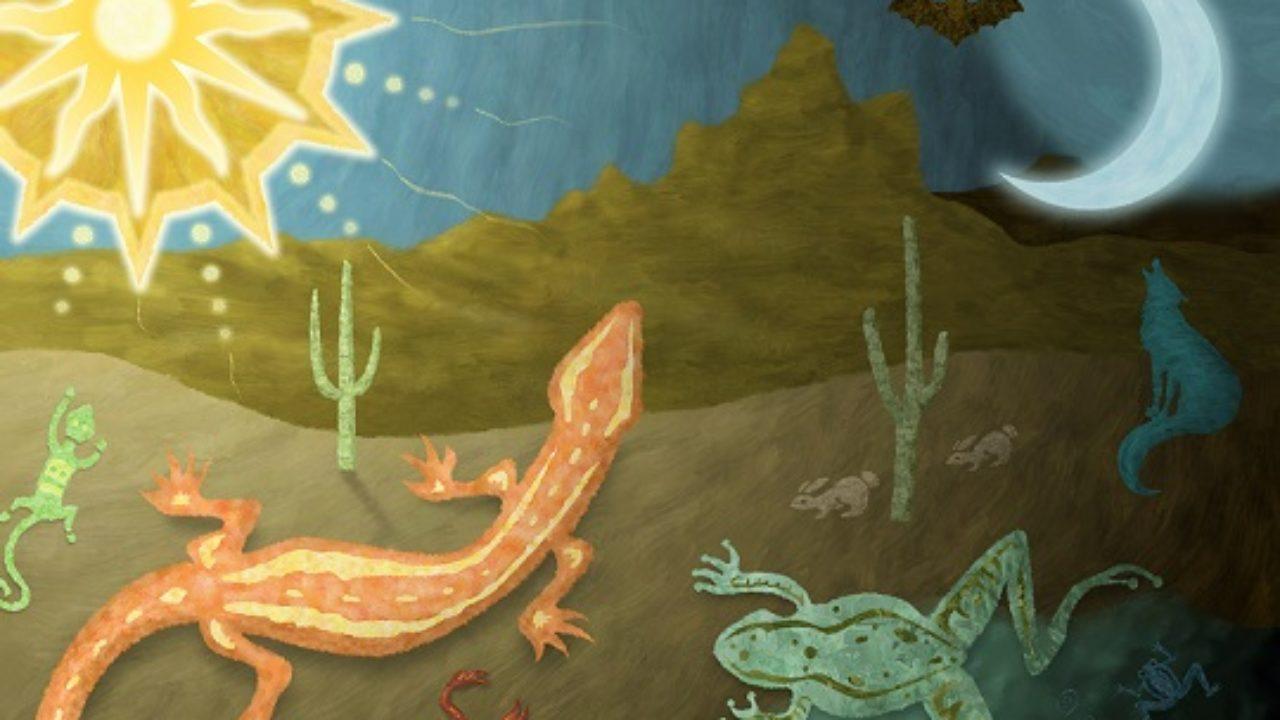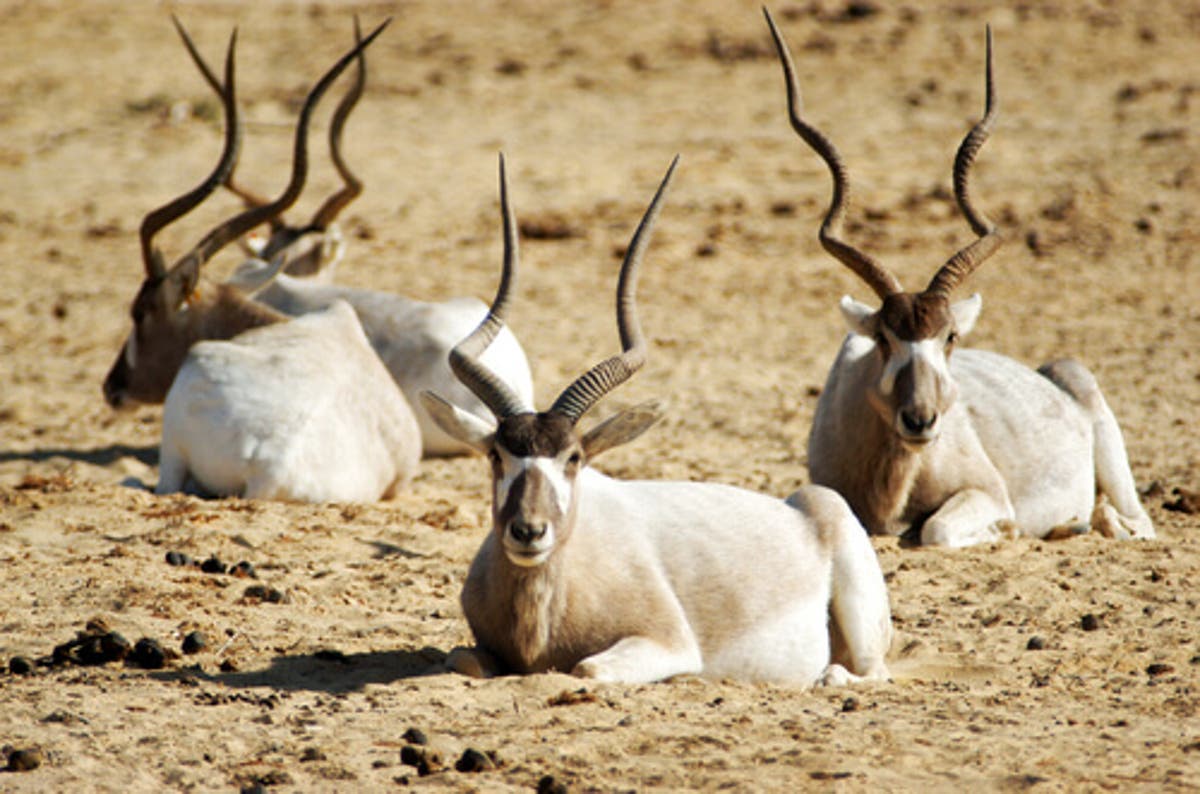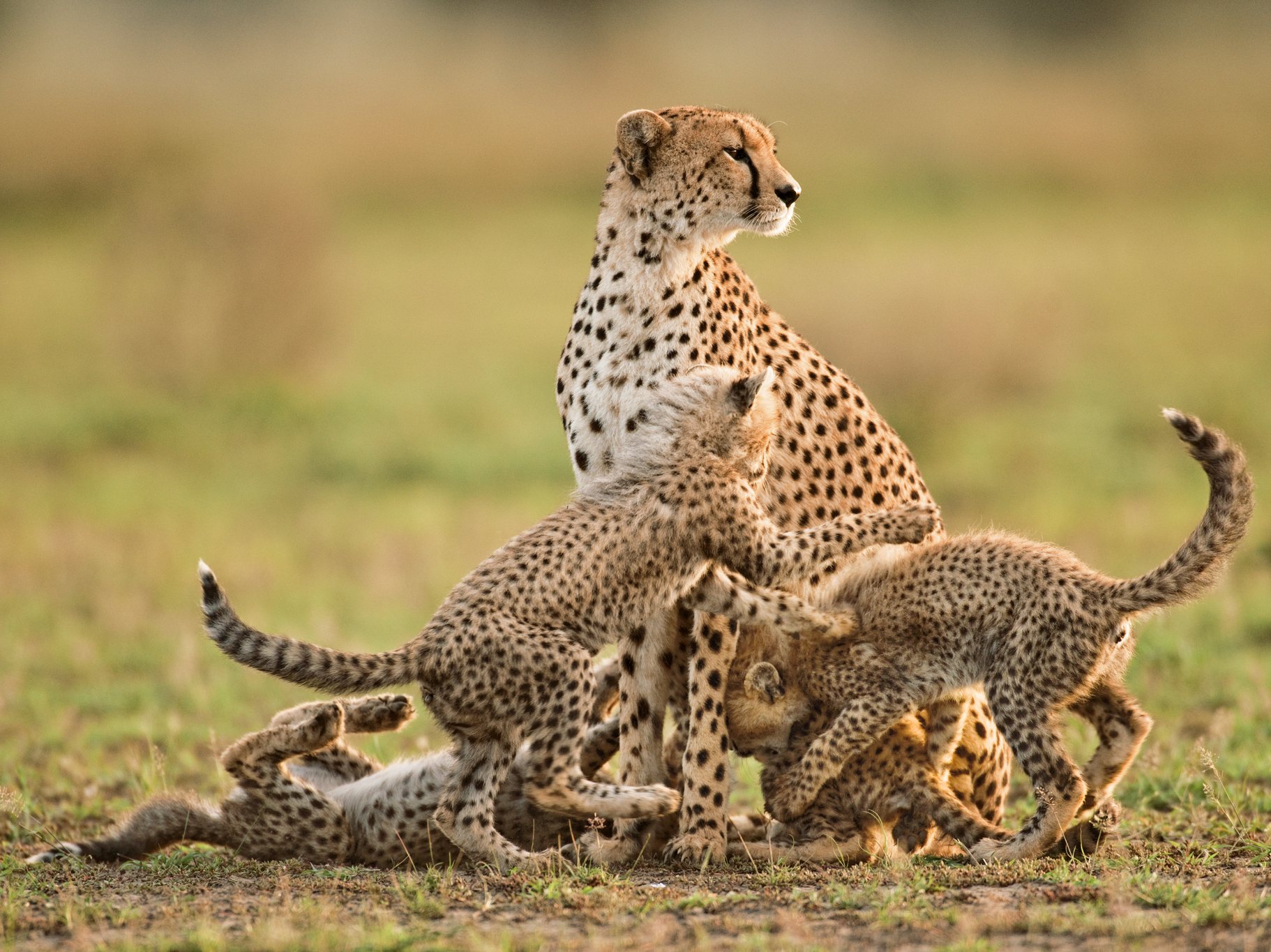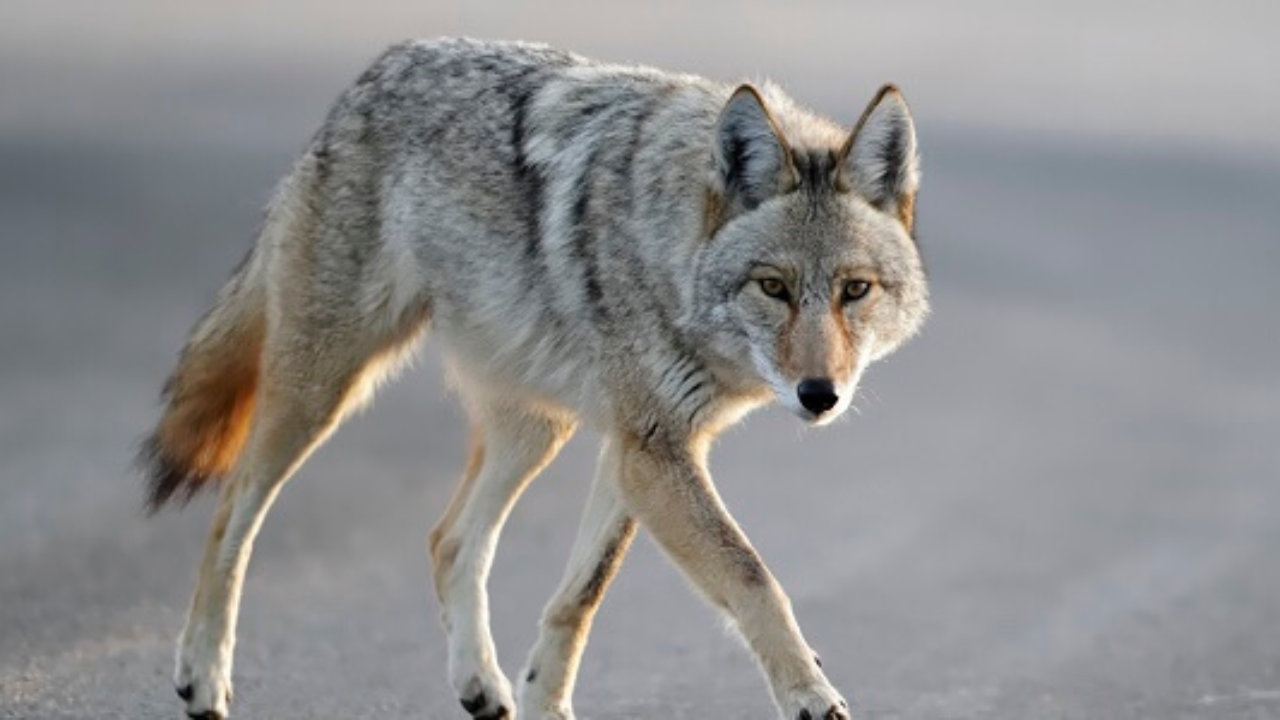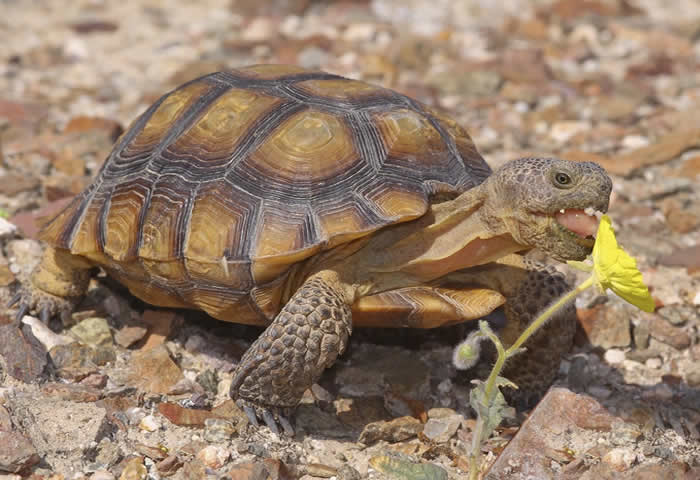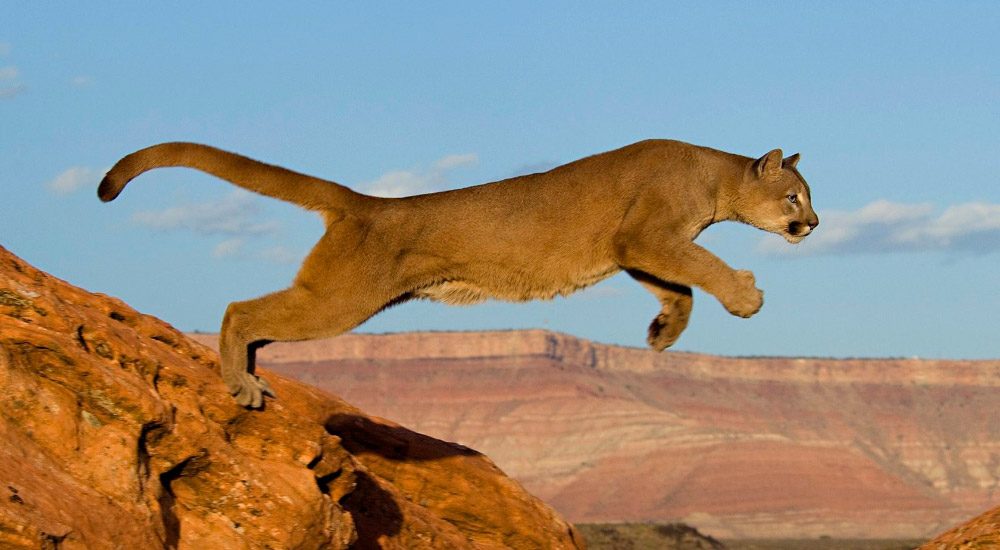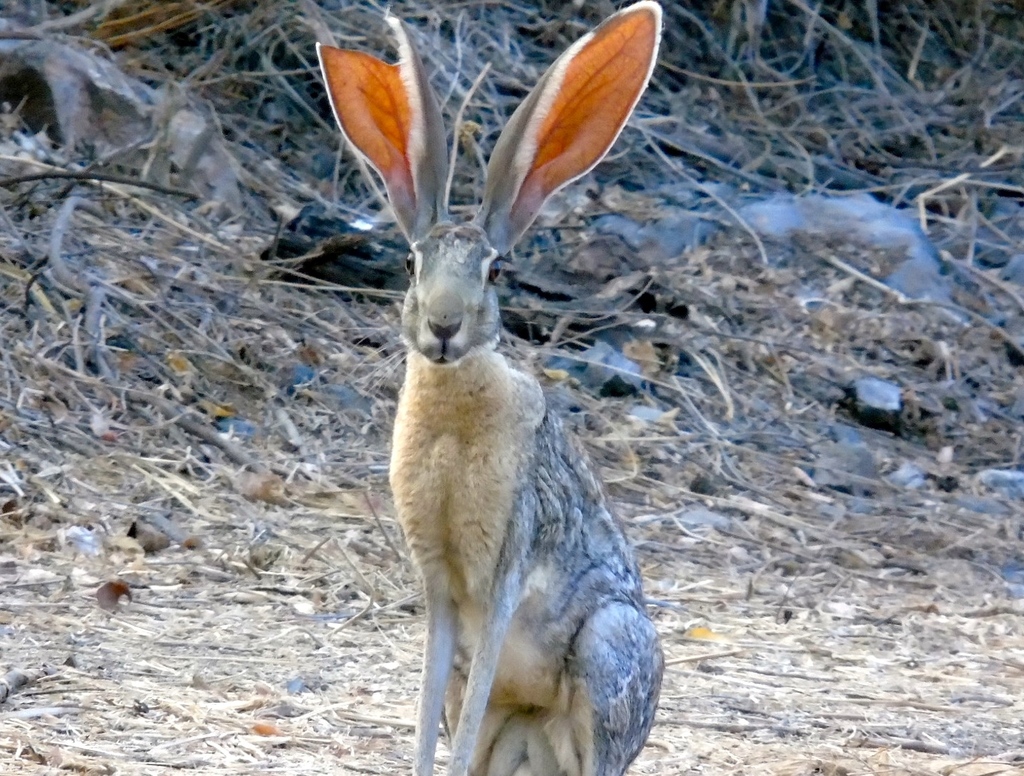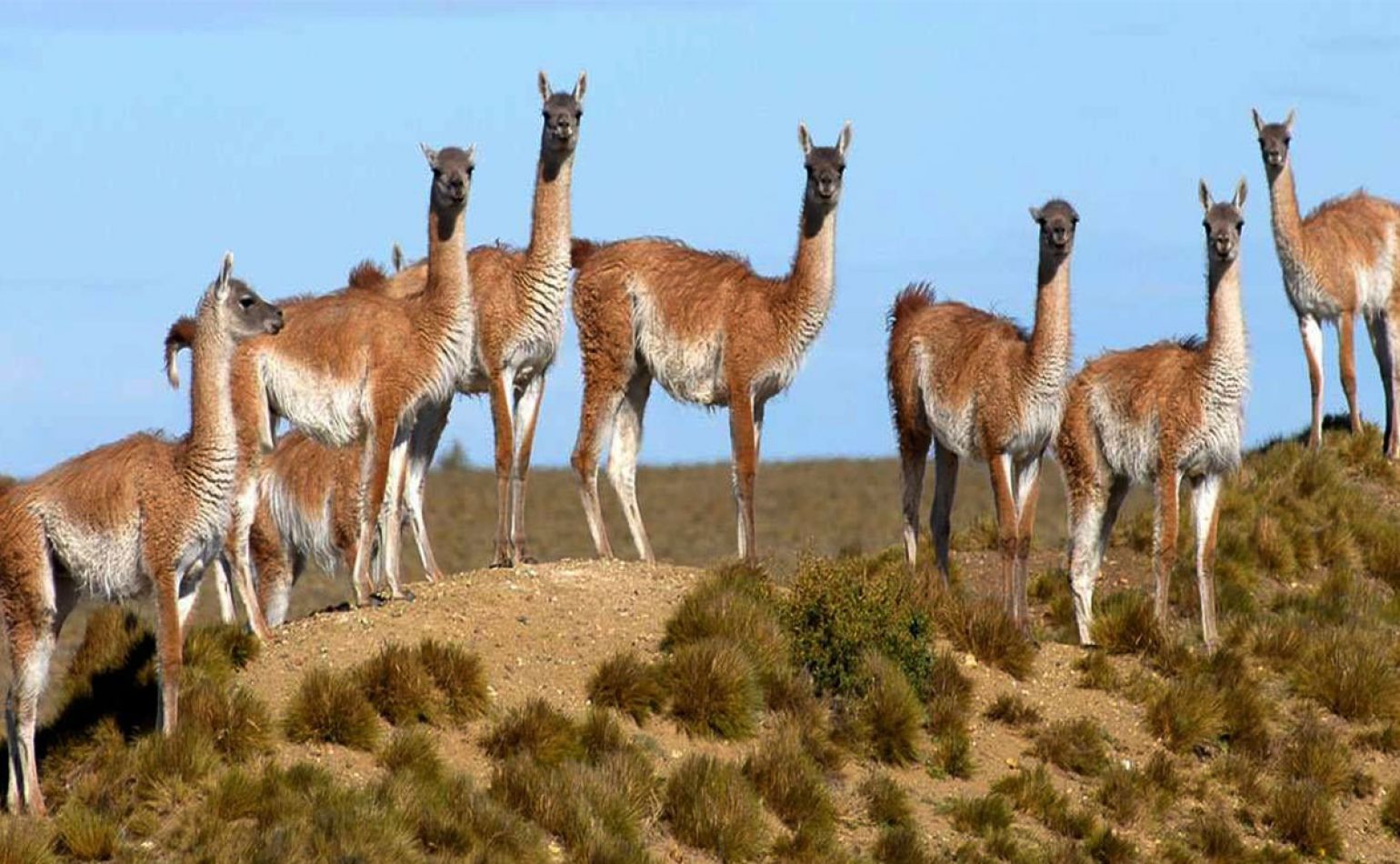We have always been captivated by desert animals and the following question usually comes up: how do they manage to survive in such extreme environments? In this post we will try to clarify that and other doubts.

How do desert animals live?
Deserts are areas with their own characteristics, more common than is often thought. Also, contrary to popular belief, they can be found in both hot and cold climates, known as frozen or polar deserts. Although in both cases they share an almost total absence of precipitation.
In such a way that the soil of the deserts is arid, parched and rough. However, this extreme condition does not prevent the existence of fauna and flora in these places. However, both its plants and animals have had to adapt to the demanding conditions.
But the creatures that inhabit these unenviable places are not as rare as is often thought. Although it must be recognized that they are not very diverse, especially when compared to the enormous variety of species that jungles and forests gather.
This happens because the desert foliage has scarce water resources, so its growth is slower. This can be seen in the almost bare landscape, which offers few opportunities for animals to feed. But neither does it allow them more options to shelter from the sun and the wind.
In such a way that they have had no choice but to adapt to withstand inclement temperatures. They are also able to endure entire days without drinking water, while they must manage to find food at night, to avoid the scorching sun.
Thus, the life of desert animals is extremely sacrificed, both for insects and for large mammals. However, each species has its own characteristics that differentiate it from the others. But we'll talk about that soon.
Desert animals: examples and characteristics
Here we will refer to certain examples and characteristics of desert animals, but of hot deserts, since in the polar ones they are very scarce, so we will leave them for another occasion.
Camel
There is no doubt that camels are one of the first animals that come to mind when we hear the word desert. As is known by the vast majority, these legendary creatures can accumulate enormous volumes of fat in their hump. It is a fat that will later be burned and re-digested by your body, as it cannot find food.
Additionally, camels have thick hairs on their ears, which prevent sand from penetrating their ears. Something similar happens with her eyelashes, also thick and long.
But there are even more amazing adaptations in this first on the list of desert animals. We refer to specialized membranes that they have in their eyes and hooves. These fulfill the same functions of the shoes that people use to walk on the snow.
Dingo
Next on this list of desert animals, they are descended from domestic dogs. But these live in the desert regions of Australia, where they can measure 1,5 meters. Dingoes live in family groups, although they can be associated in large packs to make hunting more efficient.
Originally these creatures based their diet on kangaroos, although with the arrival of man to their vast lands their tastes changed, so now they are more inclined towards sheep and rabbits.
Peccary
It is a mammal endowed with an extremely strong digestive system, so much so that it is capable of ingesting cacti without being affected by the many spines of these plants.
As can be seen, it is an extreme way of survival, since cacti, in addition to being a source of food, also provide the peccary, like other creatures, with large amounts of vital liquid.
Ganga
Gangas are birds that live in the most arid areas of Asia and North Africa. What is surprising about these birds is that their belly feathers have a mechanism that allows them to absorb and hold small amounts of water.
The males are known to use these feathers as sponges, to carry water to their nests and share it with their mates and chicks.
Road Runner
Now we will see one of the most famous desert animals: the roadrunner. This is a bird typical of the driest landscapes of North America. These magnificent animals not only beat the legendary coyote at every turn, but are also capable of surviving without ingesting any water.
This miracle of nature is possible, thanks to the fact that they obtain the vital liquid from their food. But as with all species, this fast and intelligent feathered needs to expel the minerals it does not need. The problem is that you can't do it through urine, as this would be an unforgivable waste of fluids.
In such a way, the roadrunner concentrates all these minerals in a single drop of fluid, which it secretes as a tear through a gland near the eyes.
sand viper
This desert dweller is one of the deadliest snakes on the planet. Its lethality is due to a hemotoxin it produces, which is capable of killing any prey almost instantly.
The sand viper bases its diet on small mammals, as well as birds and lizards. It has its residence in the Sahara desert and can reach 35 cm in length. It is also identified by its triangular head and tiny eyes.
Beetles
Of these desert creatures there are several species. Just as an example we can cite the dung beetle or the Stenocara gracilipes beetle.
The dung beetle, or acatanga, represented a venerable symbol in ancient Egypt. This mythical little survivor feeds on the feces of other desert animals. For this they usually mold said feces in the form of a ball that they then push to their den, from which their name originates.
For its part, the Stenocara gracilipes is an inhabitant of the Namib desert, in southern Africa. Thanks to its proximity to the sea, this vast expanse benefits from sea fog in the early hours of the day. It is from this mist that these beetles obtain the water they need to survive in this desert.
What how do you do it? Well, maybe you don't believe it. It turns out that these creatures remain motionless for a long time so that the mist condenses on their bodies. Then, when a few drops have been created, the beetles quench their thirst with the fresh water and until the next day, when, as you already suppose, you always have to get up early.
Addax
Next on this list of desert animals is a type of antelope that lives in the dry and deadly Sahara. It is the addax, a creature threatened with extinction due to indiscriminate hunting. Currently there are only about 500 copies left. They are from Mauritania, Chad and Nigeria.
These beautiful desert animals are characterized by twisted horns and pale fur, which is also why they are also called white antelope.
Their diet is based on herbs, leaves and plants typical of the desert. The surprising thing is that this mammal extracts much of the water it requires from food. In such a way that they can survive the severe scarcity of water that characterizes the Sahara.
Varanids
The Varanidae family brings together multiple types of lizards originating in Africa, although most of them live in the Sahara desert. They are characterized by being poisonous and act aggressively when they feel threatened. It is cold-blooded, forcing it to hibernate between September and April.
These reptiles base their diet on rodents as well as fish and eggs. But equally, and if the circumstance allows it, they can feed on birds and small mammals. They can measure between one and two meters in length.
red necked ostrich
This North African bird is one of the largest in the world. It can reach 2,7 meters in height. Its neck is covered by pink and reddish feathers. While the males, in the rest of their body they exhibit black and white plumage, which changes to gray in the case of females.
Its long and strong limbs make it one of the fastest animals in the Sahara, as it can reach a speed of 64 km/h, which puts it on a level with gazelles.
It is another species at risk due to illegal hunting and the gradual disappearance of habitats. Ostriches currently only exist in six of the eighteen countries in which they used to exist.
hyrax
This other of the desert animals is a herbivorous mammal native to the south of the Sahara and the Middle East in general. There are four species of these creatures, which usually dwell in cracks in the middle of the rocks, in groups that can reach 80 specimens.
Such concentrations are due to the fact that the hyrax do not have an adequate system to control their temperature. In such a way that they are forced to stay very close to each other to avoid losing body heat.
Let's not forget that in deserts temperatures tend to drop a lot at night, even below 0° Celsius, which is a great survival challenge for these and many other creatures.
common gazelle
Also known as dorca, the common gazelle is a type of gazelle native to the Sahara and is also among the endangered species of IUCN.
Today there are only between 35 and 40 copies. However, the common gazelle is very well adapted to desert conditions, to the extent that it is able to endure its entire life without ingesting water.
For greater efficiency, these desert animals remain active between dusk and dawn. During this time they seek out and eat both leaves, fruits and roots, or any other form of vegetation available.
desert foxes
Among these clever animals of the desert, the fennec and pale fox. As for the first, it must be said that he is the smallest member of the canids. It is a natural fox from Egypt, Morocco, Nigeria and Kuwait.
It is endowed with mechanisms that make it easier for them to survive in these extremely dry climates. Among such adaptations, their long ears stand out, which help them expel heat from their body.
It feeds on birds, rodents and even insects. In the case of the pale fox, they live in a territorial strip located between Senegal and Sudan. They have very light fur, similar to the color of sand, which makes it easy for them to camouflage.
Saharan Cheetah
Among the great predators that make life in the Sahara, the local cheetah is one of the most outstanding, especially in the center-west area where it lives.
Unfortunately, these desert animals are also listed as endangered by the IUCN. This is because today there are only between 250 and 300 adult specimens. This fearsome hunter feeds on antelope. It usually goes for its prey at night, alone.
The Saharan cheetah is distinguished from other varieties by its color. Turns out it's paler than the others, so the dots and dashes become less visible.
Coyote
Coyotes, like foxes, are members of the canid family, so they are very similar to dogs, although these are wild creatures. It is one of the most surprising species, since it is capable of adapting to almost all types of climate, from snowy areas to desert regions.
But it can also live around human settlements, although it is also capable of living isolated. In such a way that its great capacity for adaptation can be understood. But when they live in deserts, these creatures feed on rodents, scorpions, Birds and even reptiles. They do not exceed 25 kilos in weight in their thirteen years of average life.
desert elephant
This colossal creature inhabits the desert regions of northwestern Namibia. It is one of the few types of elephants that are adapted to the desert climate.
To survive, he has had to adjust his body and metabolism. The first thing to note is its limbs, longer and flatter than those of the rest of its cousins. A change that allows them to walk with relative agility on the sand.
But in order to better withstand the rigors of the desert, they became smaller than other species, which allows them to survive on the sparse vegetation of desert areas.
gerbil
These cute little rodents are very popular, since they often become pets like their cousins the hamsters. However, gerbils are physically endowed in such a way that they can survive in the wild without human intervention.
Such little creatures are native to the deserts of Africa, Asia and the Middle East. Their diet is based on fruits, roots, seeds and flowers. Although this can change a bit depending on the weather conditions. Such is the case that they can feed on worms and insects, if the situation demands it. Gerbils do not grow to more than 17 cm in length, while their fur can be light brown, gray or white.
Peregrine falcon
This majestic bird is capable of surviving in almost every type of environment on the planet. This is due to its hunting ability, which is based on its great speed.
In this sense, you should know that the peregrine falcon is considered the fastest bird of all, since it can fly at a speed of over 140 km/h. But to that lethal speed must be added an incomparable view, which together allows them to find prey at a distance of up to 300 meters and then catch it with relative ease.
Among these unfortunate creatures that become their dinner, other birds stand out, especially pigeons, although they also include rodents and small lizards in their diet.
emperor scorpion
It is one of the largest scorpions, reaching a length of 21 cm and a weight of 30 g. Its color will vary from black to brown, depending on the habitat.
Its venom is not as strong as that of other scorpions, but its sting is still very painful. It is a species typical of West Africa, however they have become popular as an exotic pet.
thorny devil
This strange creature only lives naturally in the Great Sandy Desert of Australia. It is brown with some dark body parts.
However, what most identifies this curious desert animal are the numerous sharp spines that cover its body, which can be used both as a defense and to retain water.
An adult thorny devil can measure up to ten centimeters in length. While the female can be in the order of twenty cm. They feed only on ants.
Mojave desert tortoise
It is a creature with a dark brown carapace with either orange or yellow spots. Native to the Mojave Desert in the US, it has extremely thick fur and long, slender hind limbs, which it often uses to burrow into the ground.
They can measure between 25 and 36 cm in length, by about 15 cm in height. His but usually reaches 23 kg.
Puma
This ferocious feline is also known as the mountain lion or American lion because it is native to that continent, where it is the undisputed king of the Carnivorous animals. They are one of the most dangerous desert animals, capable of weighing 120 kg and measuring 2,8 m in length, which makes them predators to watch out for. To which must be added his keen sense of hearing thanks to pointed ears.
They have brown fur, although with different variations. Interestingly, this large cat cannot roar, although they can make other sounds such as growls and purrs. He is a solitary and lethal hunter.
antelope hare
This swift creature is one of the mexican desert animals and from Arizona, USA. They are large jackrabbits that are easily identified by their extremely elongated and pointed ears. Its color can vary between gray, brown, orange and even white.
It basically eats cactus and leaves of the scarce desert foliage. Although curiously they have been seen feeding on land in order to obtain minerals.
Guanaco
This is a somewhat strange case, because in addition to living in the Andean areas of Argentina, Peru and Bolivia, he is also among the Chilean desert animals, the Atacama, the driest in the world.
It is a member of the Camelidae family, so it would be the South American camel. It is a wild creature contrary to its cousin the llama, which is domestic. It is approximately 1,60 m tall and weighs around 91 kg. Curiously, it is one of the few mammals capable of drinking salt water without any problem, which makes it one of the Rare animals from South America.
other desert animals
To finish we add others animals that live in the desert that you may need to know:
- Dromedary (Camelus dromedarius)
- american black vulture
- fat tailed scorpion
- yellow palestinian scorpion
- armadillo lizard
- Mojave Rattlesnake
- egyptian cobra
- camel spider
- common vulture
- desert woodpecker
- desert rattle
- Sonoran Owl
- pharaoh owl
- western desert tarantula
- namibian beetle
- Wasp hunting tarantulas
- northern bat
- Red kangaroo
- desert iguana
- desert rat
- cape fox
- Salt Mouse
We hope that this post has been useful for you to know what animals are in the desert.
